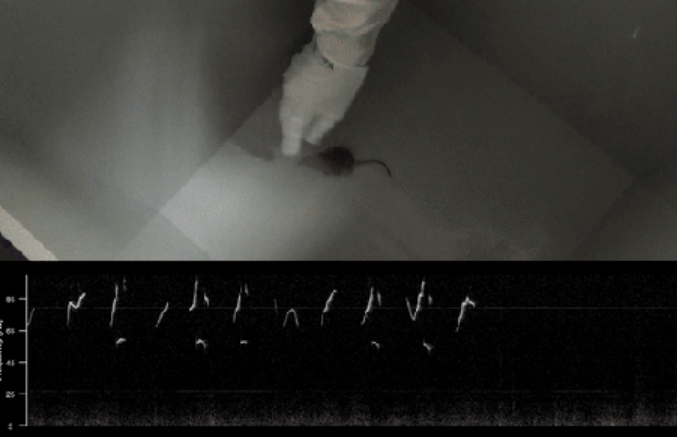Selective breeding makes mice playful towards humans and other mice Tame mice show human- and mouse-directed playfulness
Koide Group / Mouse Genomics Resource Laboratory
Comparative Analysis of Tickling and Conspecific Play in Tame Mice and Golden Hamsters
Dagher S, DeAngelo D, Sato RY, Norimoto H, Koide T*, and Ishiyama S*
(*co-corresponding author)
Behavioural Brain Research (2026) 496 DOI: 10.1016/j.bbr.2025.115849
Social “play” is a vital behaviour through which animals strengthen bonds, acquire essential skills, and express positive emotions. Yet mice have long been regarded as creatures that simply do not play.
A research team led by Dr. Sarah Dagher (PhD student at the time of the experiment, now at the Max Planck Institute for Metabolism Research) and Dr. Shimpei Ishiyama (now at the Central Institute of Mental Health, Mannheim), and Associate Professor Tsuyoshi Koide at the National Institute of Genetics has now overturned this long-held belief. They discovered that “tame mice” — selectively bred to approach a human hand — display playful behaviours with both humans and fellow mice.
When tickled, these tame mice emit ultrasonic sounds resembling laughter and actively chase the researcher’s hand. In social settings, they engage in playful behaviours such as poking at one another and making exaggerated movements, again accompanied by ultrasonic vocalisations. By contrast, ordinary mice show little response to human tickling, interact less with peers, and often display aggression instead.
Intriguingly, the tame mice produce different types of vocalisations when playing with humans compared to when playing with other mice, indicating that they clearly distinguish their social partners.
These findings have important implications for understanding animal domestication and human–animal relationships. Breeding mice for tameness not only increased their willingness to play with humans but also enhanced social play among peers. Previous genetic analyses further revealed that regions associated with tameness in mice overlap with those linked to domestication in dogs, suggesting a shared mechanism across species.
This study shows that a tendency to “enjoy play” is not limited to certain animals but can emerge as a result of increased receptiveness to human interaction. It also challenges the long-standing notion that “rats play but mice do not,” demonstrating that mice, too, can become playful companions — both for humans and for one another.

Figure: The selectively bred mice respond to tickling by emitting ultrasonic vocalisations and exhibiting play-like behaviour, such as spontaneously chasing the hand.
The video is here: https://neurogelotology.lol/2025/09/30/selective-breeding-makes-mice-playful-towards-humans-and-other-mice/















